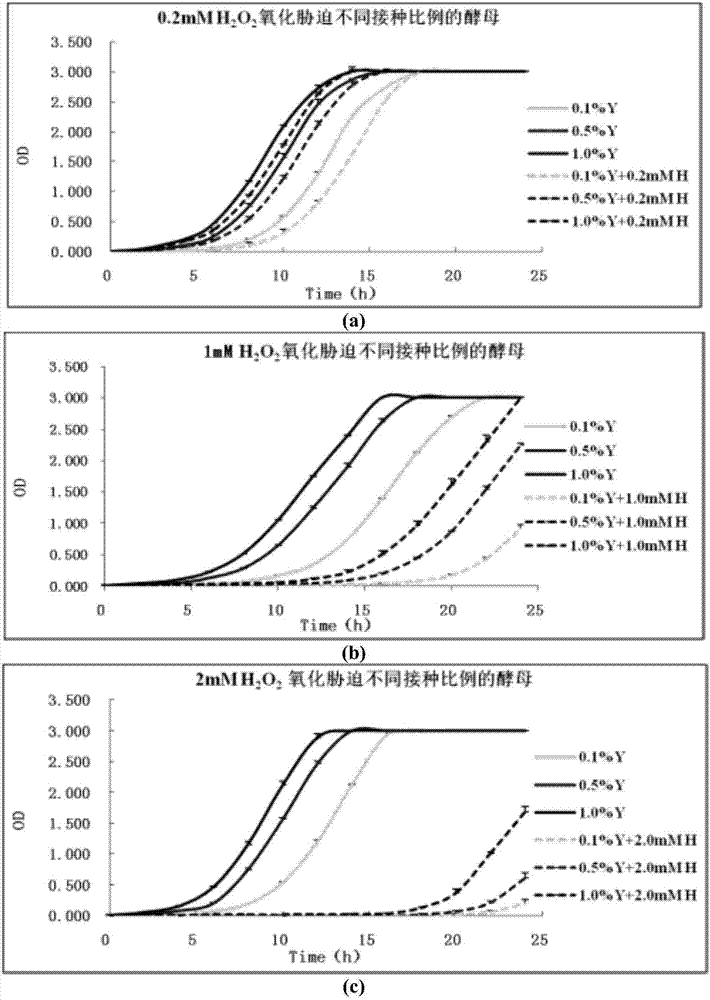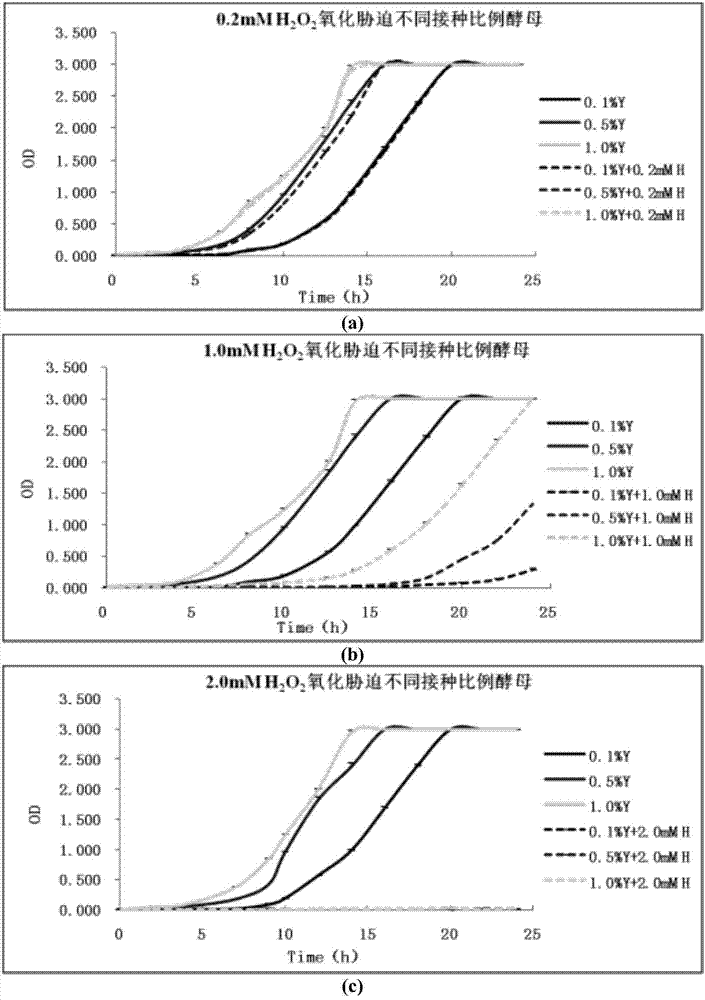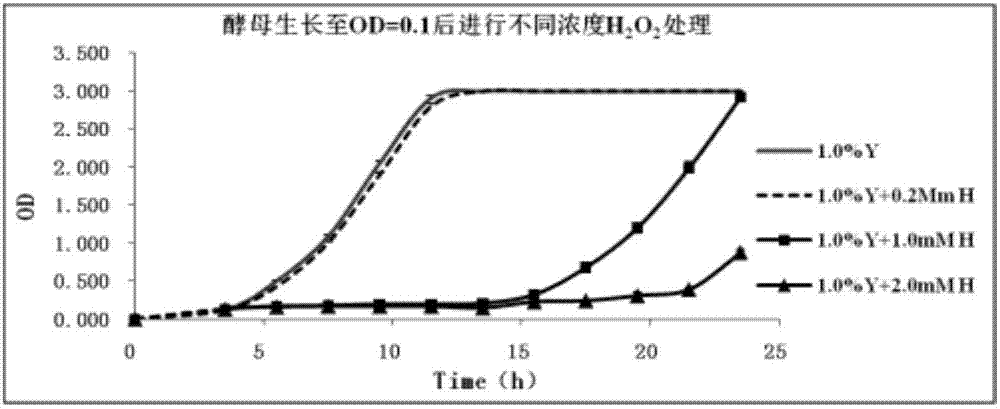Method for evaluating antioxidant activity of antioxidant substance
A technology of anti-oxidation activity and anti-oxidation substances, applied in the biological field, can solve the problems of increased difficulty in operation, sensitivity to temperature and pH value of fluorescent substances, expensive instruments, etc., and achieve the effect of overcoming the long cycle
- Summary
- Abstract
- Description
- Claims
- Application Information
AI Technical Summary
Problems solved by technology
Method used
Image
Examples
Embodiment 1
[0059] The oxidative stress treatment of embodiment 1 Saccharomyces cerevisiae
[0060] Pick a single colony of yeast and culture it in liquid to OD 600 = 1.0 or so, as bacterial strains, inoculated in a 100 mL Erlenmeyer flask containing 20 mL of YPD liquid medium at a ratio of 0.1%, 0.5%, and 1.0%, respectively. Join in groups to prepare H 2 o 2 , so that the final concentration is 0mM (control), 0.2mM, 1.0mM, 2.0mM.
[0061] The ATCC9763 and S288c bacterial liquids were used as the parent species to do the above treatment, and different concentrations of H 2 o 2 Inhibitory effects of treatments on different strains of yeast.
[0062] Group A model: H immediately after S. cerevisiae inoculation 2 o 2 oxidative stress
[0063] by OD 600 =1.0 Yeast (ATCC9763 and S288c) bacterial solution is the mother species, inoculate according to different proportions (0.1%, 0.5%, 1.0%), and add H at the same time 2 o 2 treatment, observing different concentrations of H 2 o 2In...
Embodiment 2
[0072] Example 2 Using the evaluation method of antioxidant activity of antioxidant substances to evaluate the antioxidant effect of quercetin
[0073] 1. The effect of auxiliary agent DMSO on the growth of yeast ATCC9763
[0074] The yeast with 1.0% inoculum ratio treated with 0.1% DMSO was used as the treatment group to study the effect of the auxiliary agent DMSO on the growth of yeast ATCC9763 when the volume fraction was 0.1%. Depend on Figure 5 It can be seen that the growth curves of the treatment group (0.1% DMSO) and the control group almost completely overlap. The experimental results showed that 0.1% DMSO neither inhibited nor promoted the growth of yeast ATCC9763. Therefore, it need not be considered as an experimental factor in the growth curve determination.
[0075] 2. Screening of Quercetin Concentration Gradients
PUM
 Login to View More
Login to View More Abstract
Description
Claims
Application Information
 Login to View More
Login to View More - R&D
- Intellectual Property
- Life Sciences
- Materials
- Tech Scout
- Unparalleled Data Quality
- Higher Quality Content
- 60% Fewer Hallucinations
Browse by: Latest US Patents, China's latest patents, Technical Efficacy Thesaurus, Application Domain, Technology Topic, Popular Technical Reports.
© 2025 PatSnap. All rights reserved.Legal|Privacy policy|Modern Slavery Act Transparency Statement|Sitemap|About US| Contact US: help@patsnap.com



